Even if you don’t know Flox… you know Flox. Her iconic artwork has appeared on everything from murals to umbrellas to trains – to picture books! In 2017, she illustrated Malcolm Clarke’s Tu Meke Tūī!, and it was a runaway success. Simply selling oodles of copies to delight readers young and old and getting a popular Māori language edition published wasn’t all – there has even been a Tu Meke Tūī! stage adaptation to bring the vibrant pages to life. Now the follow-up, Tu Meke Tuatara!, is here, so we asked Flox (Hayley King) to share a day in her life illustrating the most recent creation.
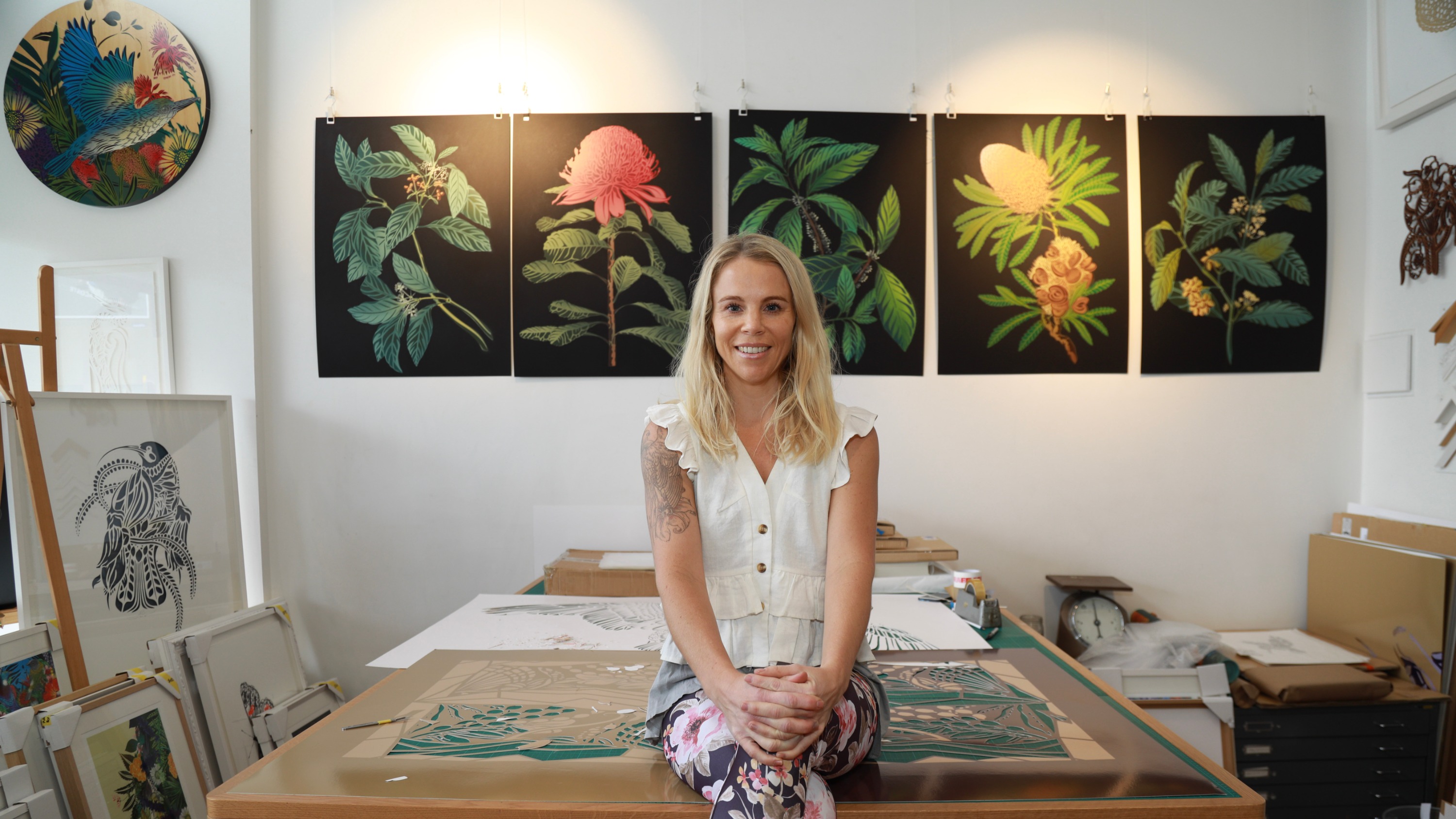
My favourite thing about being an artist is that every day at work is different. Some days I might be offsite on a mural project, other days I may be teaching a workshop or developing a new product. I’m always pursuing new avenues for my business and art to evolve.
Any resemblance to a daily routine, however, was completely thrown out the window with the onset of Covid-19. All my projects that were scheduled outside of Auckland, came to a grinding halt and we were all forced to isolate during level four lockdown. While this was challenging, it also provided me with space to really focus on the illustrations for a very exciting children’s book called Tu Meke Tuatara!
During lockdown, the one essential, immovable element to my morning routine was coffee. The first thing I did when I woke up was put the jug on. I would sip my coffee while reading the news to catch up on what’s happening in the world. I’d try to get in a daily dose of exercise too, going for a run or taking my youngest son, Indi, for a bike ride. While the schools were closed, I was tasked with daily homeschooling of Indi. Once everyone was sorted with a plan for the day, though, I’d head up to my studio to begin work.
Once everyone was sorted with a plan for the day, though, I’d head up to my studio to begin work.
Tu Meke Tuatara! is my second children’s book collaboration with author Malcolm Clarke and publisher Little Love. Malcolm had already provided me with the manuscript and Anna, the graphic designer from Little Love, created a storyboard that provided me with a framework to build from.
My task was to ‘Floxify’ the illustrations and expand on the story through my artwork. Similar to our first book, Tu Meke Tūī!, the story was inspired by Aotearoa’s native wildlife. The hero, Tahi the Tuatara, wakes up feeling sad. We then follow as his friend Roger the Ruru takes Tahi on a journey to cheer him up.
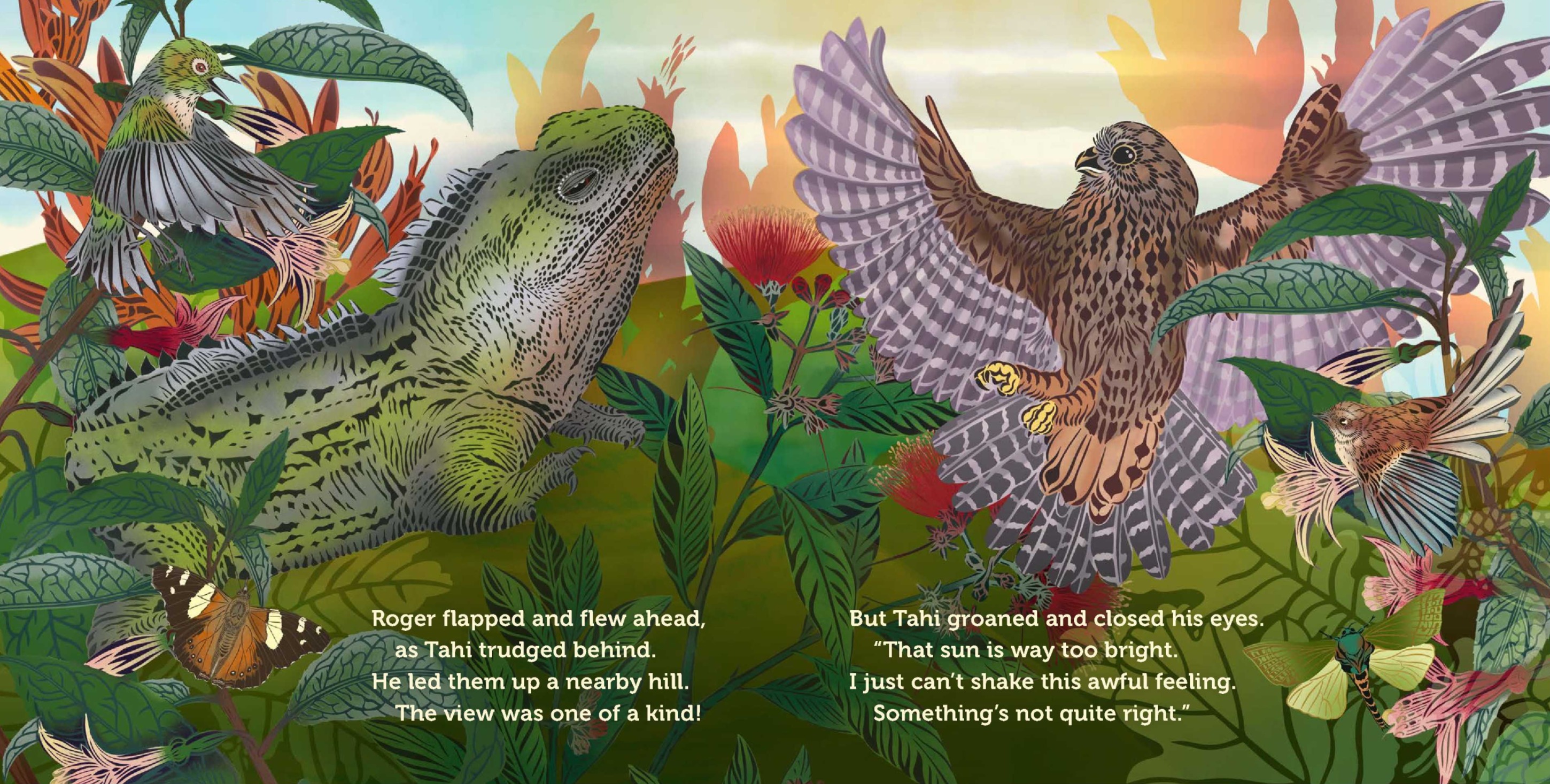
When I started working on Tu Meke Tuatara!, I became obsessed. In a way, I was grateful to be stuck at home because illustrating the book was literally all I wanted to do. Sinking into the artwork was a delightful escape from what was happening in the world. It was wonderful to have the space and time to really indulge in that process because it helped me dig deep into the landscapes and find the visual poetry.
I am a firm believer in art that is handmade. I always will be. I used hand-cut stencils and spray paint for the majority of the images. I then photographed the elements and layered them up in photoshop.
I am a firm believer in art that is handmade. I always will be.
As I was working, this book actually provided me with the impetus to evolve my process and use more technology. I ordered an Ipad Pro just before lockdown and Adobe Fresco became my canvas for some of the landscapes. It was revolutionary for me because it gave me more freedom to play with depth and colour. I discovered a way of using the background scenery to further illustrate Tahi’s emotional journey from a grumpy, sad Tuatara to being happy and finding a new friend. This was echoed in the dark, brooding skies that slowly transition to a full, bright, joyful scene in the last spread.
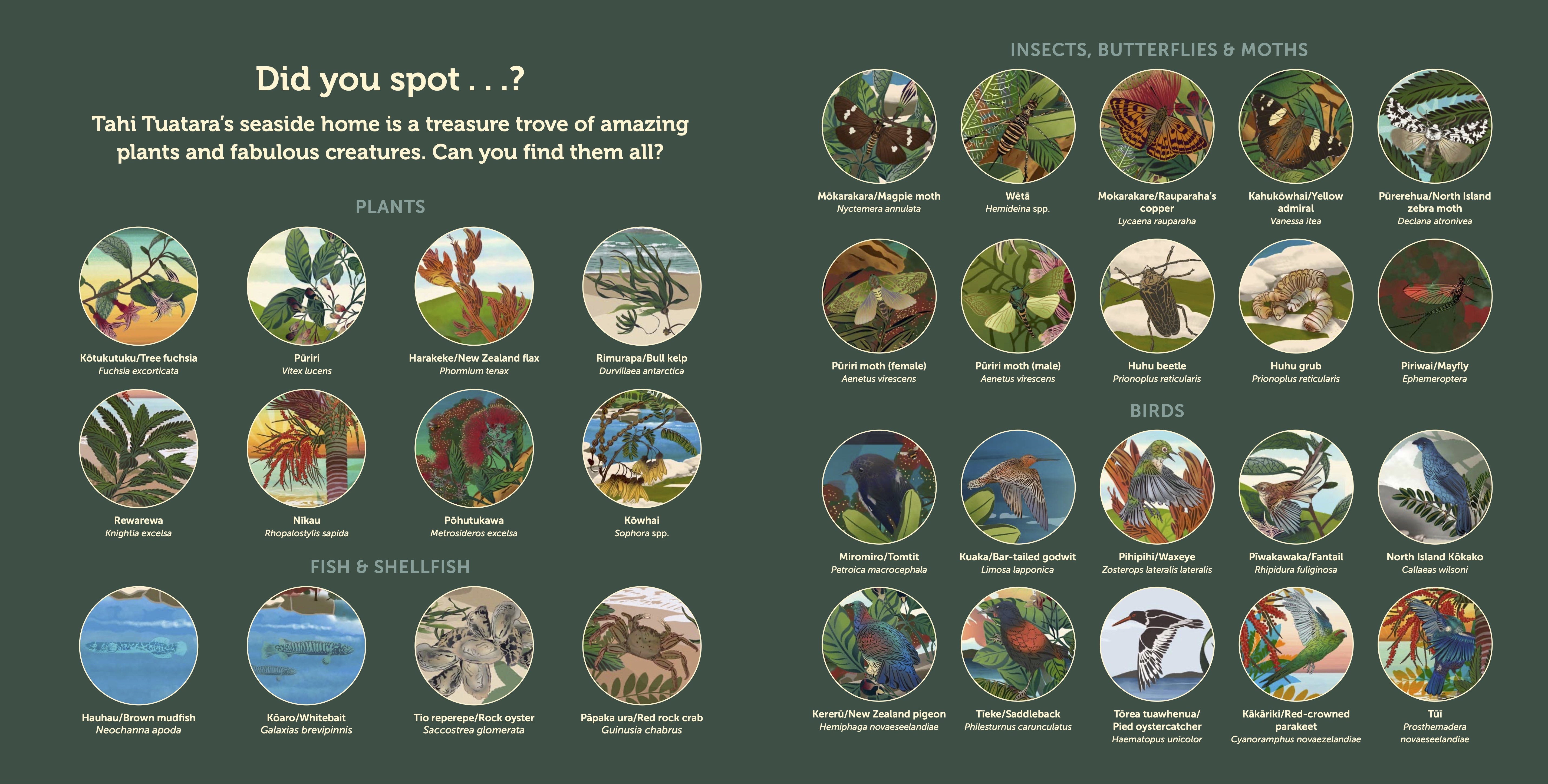
While I was working on the illustrations, I couldn’t travel to any physical locations to get inspiration. So a lot of my reference imagery came from online research. The characters I create are often ‘frankencut’ pieces of animals and birds that I have mashed together to get a particular gesture or stance. It might be a wing from one reference image and a leg or body part from another. I warp them in photoshop, and then the stencilling process adds another level of transformation before they emerge as the final character.
Thinking back to when I first started as an artist working mostly on the street, I would basically draw freehand with my scalpel. Over the years I have adapted to using reference images and digital technology as a way to refine that process. It’s been transformative for me because stencilling is so physically demanding. The toll it can take on the body is pretty high, and with that comes physical pain. Pain is something that I have had to manage over the years, but more recently I’ve shifted my focus to prevention. I’m always looking for ways to work smarter and minimise the hours it takes to create the perfect stencil. Working with technology and doing things like yoga to look after my body really help.
I’m always looking for ways to work smarter and minimise the hours it takes to create the perfect stencil. Working with technology and doing things like yoga to look after my body really help.
Children’s book illustration is relatively new to me, but it’s an art form that I have learned to enjoy. Most days in my studio, this work becomes like a meditation. There are times, however, where I have to put the tools down and focus on other business. I don’t resent the fact that I have to change hats and become a ‘business manager’. It can be a great break from the work, and it provides a good balance between left and right brain activity.
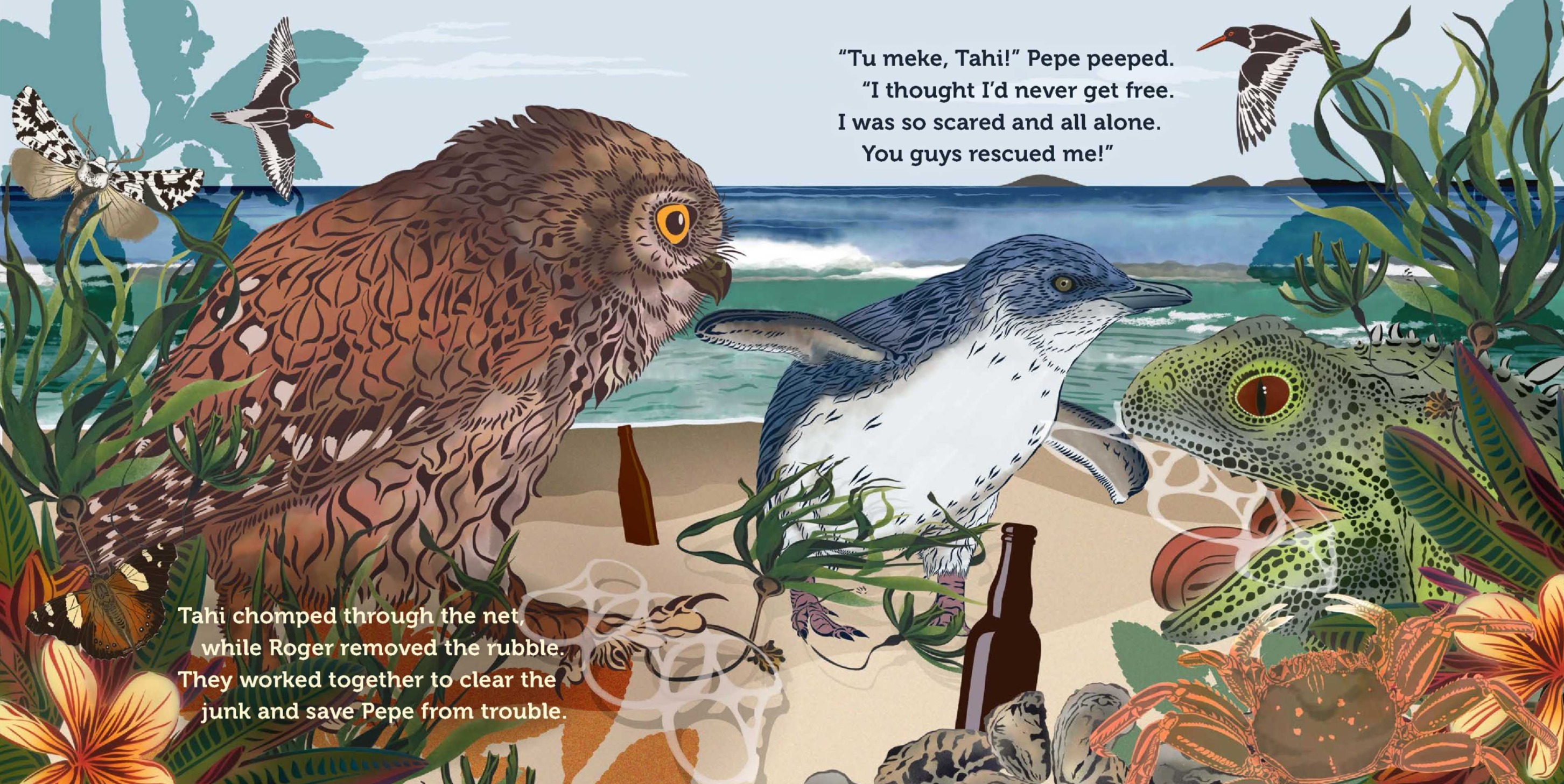
At any given time, I might have 15 to 20 projects on the go, and that can get overwhelming! I put a lot of energy into scheduling things, building really solid relationships with my staff, and reverse engineering projects to make sure I have planned enough time to deliver the finished product. There are moments when I really struggle and sometimes all I want to do is let go of all the planning and create! I feel blessed, though, that I have the opportunity to do what I love and have a highly skilled team to support me in my work.
One other fantastic thing about Tu Meke Tuatara! is that it aligns beautifully with some of the values that influence my work: empathy, conservation, creativity. We could all use a little more kindness at the moment, and I am really grateful to collaborate on a children’s book that helps teach these values to tamariki. I dedicated the book to my son Indi for that reason. He’s a massive fan of the Tuatara, and I couldn’t wait to share the finished book with him.
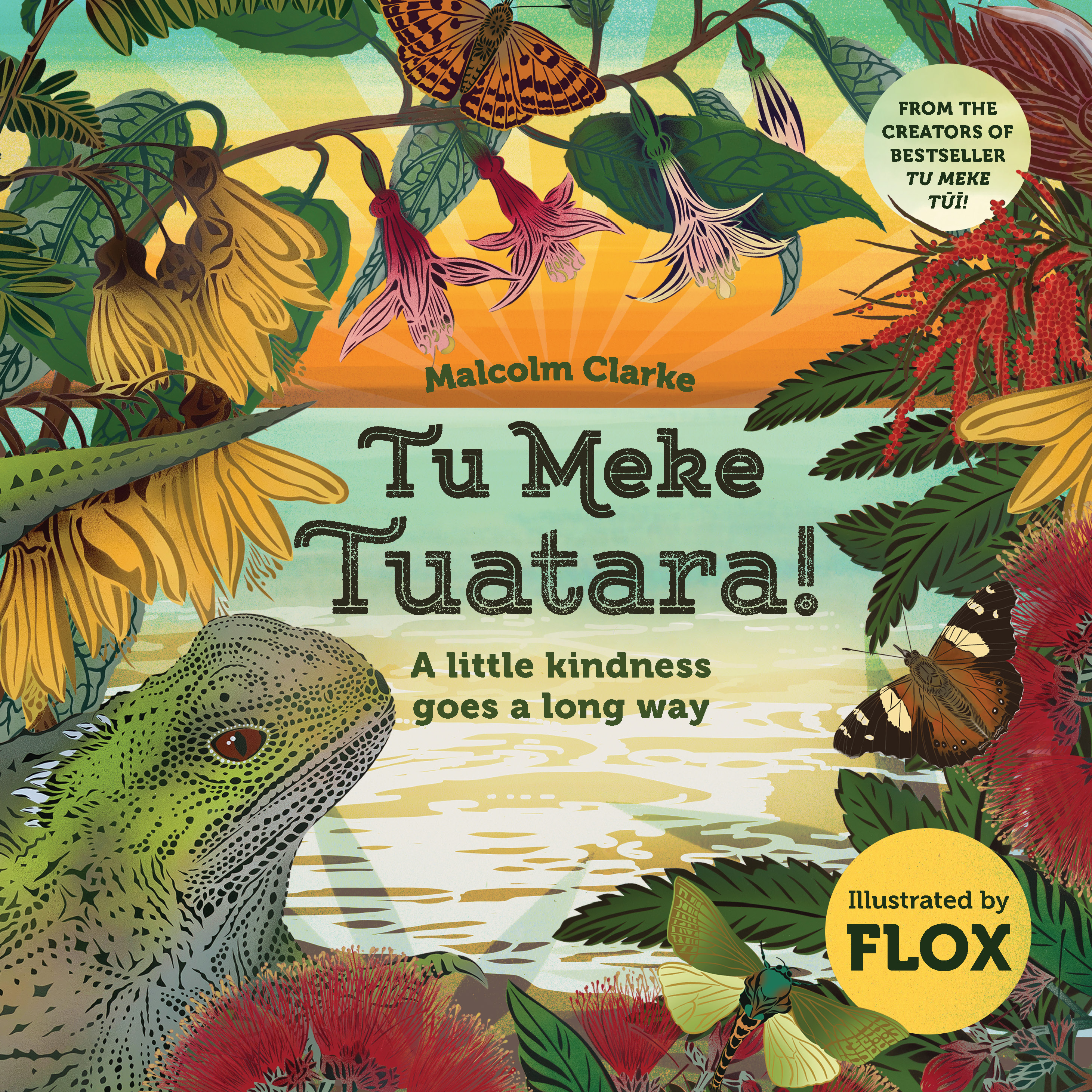

Hayley King / Flox
As an aerosol and stencil artist with a Fine Arts degree, Flox has been making her mark on the inner cityscape of Auckland since 2003. Her trademark native birds, ferns and flowers are a celebration of Aotearoa’s environmental taonga. She has been involved in numerous creative collaborations involving prints, murals, graphics, product design and workshops. Her first children’s book, Tu Meke Tūī! (written by Malcolm Clarke), was published in 2017 and its follow-up, Tu Meke Tuatara, is out now.



